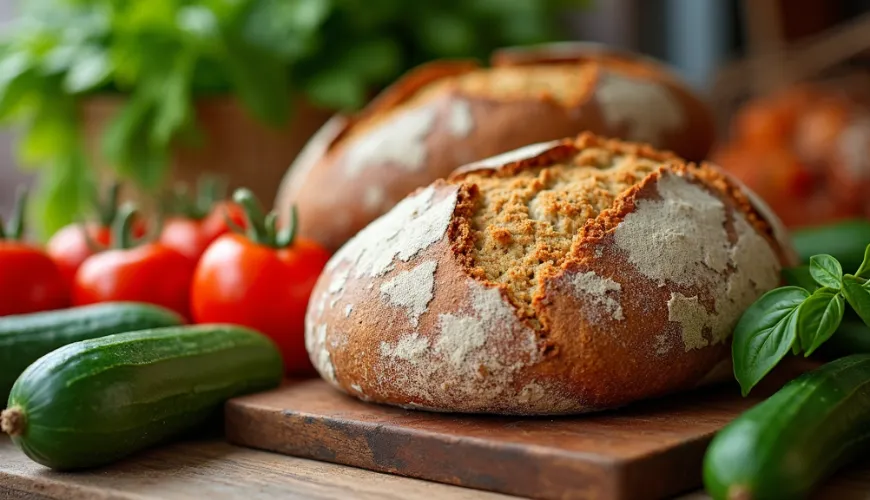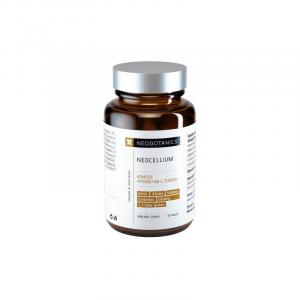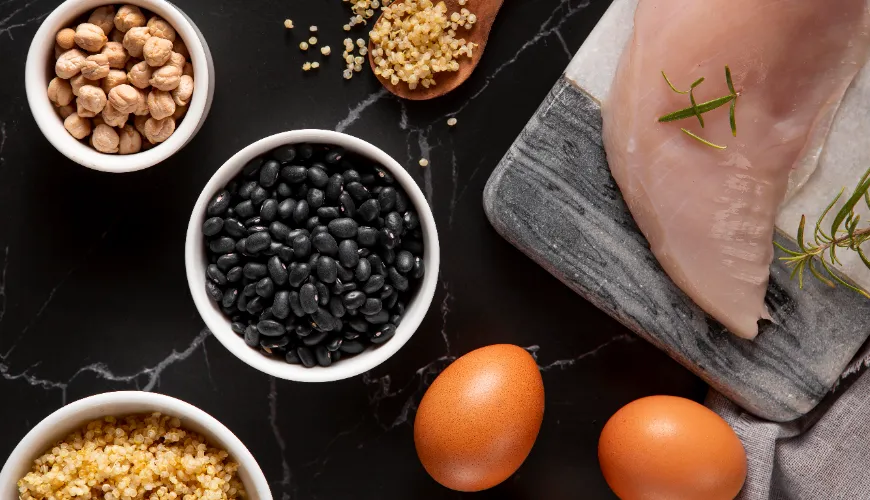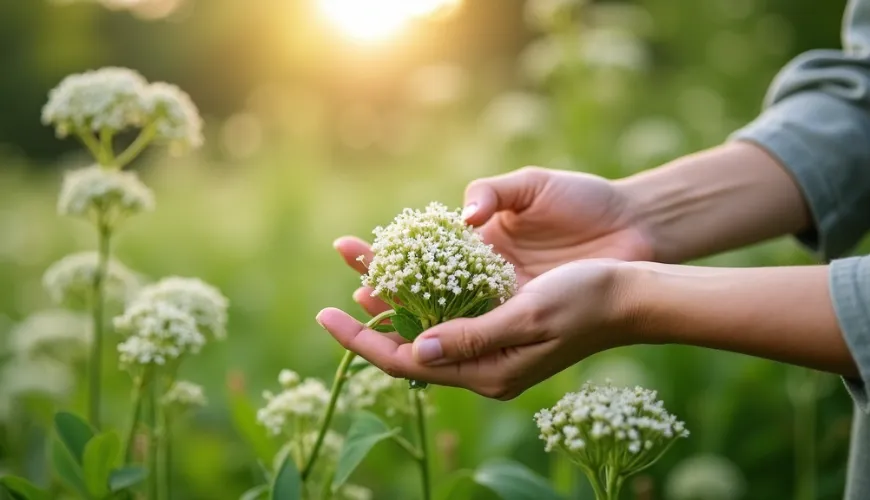
Why Panzanella is an Ideal Choice for Sustainable Eating

Panzanella - Italian Summer on a Plate
Summer has a unique ability to simplify things. In the warm months, we suddenly don't need complex recipes or hours spent by the stove. We seek lightness, freshness, and simplicity – and that's exactly what panzanella offers, a traditional Tuscan salad that proves culinary treasures can be created even from leftovers.
Panzanella originates from the heart of Italy and was originally conceived as a poor man's dish. It was meant to utilize old bread and seasonal vegetables – and because of this, it became a symbol of Mediterranean lightness and a smart approach to food. Nowadays, as more people focus on a sustainable lifestyle and reducing food waste, panzanella is more relevant than ever.
What is Panzanella Salad and Why You Should Know It
At its core, panzanella salad is a simple mix of soaked bread, tomatoes, cucumbers, red onion, basil, and olive oil. But it's not just any salad – panzanella has a distinctive character that combines rustic cuisine with a refined result. It's not just a dish, but a philosophy: take what we have on hand and transform it into something delicious, healthy, and meaningful.
This salad is an ideal example of the Mediterranean diet, which is considered one of the healthiest in the world. The combination of vegetables, healthy fats, and whole grain bread offers a nutritionally balanced meal that satisfies without unnecessarily burdening the body.
One of the key ingredients of panzanella is old bread. Not fresh, soft, or fluffy – quite the opposite. Ideally, it's two- to three-day-old bread that is dry but still holds its shape. This approach beautifully illustrates the Italian respect for ingredients and the ability to avoid waste. At a time when statistics show that nearly 20% of food is thrown away annually in Europe, panzanella is more than just a recipe – it's a stance.
Panzanella Recipe - Easy, Versatile, and Sustainable
The basic panzanella recipe is surprisingly simple and requires no special techniques. The traditional version consists of a few basic ingredients:
- Bread (preferably older, ideally sourdough)
- Ripe tomatoes
- Red onion
- Cucumber
- Fresh basil
- Olive oil (extra virgin)
- Red wine vinegar
- Salt and pepper to taste
Sometimes, other ingredients like capers, black olives, anchovies, or even mozzarella are added, but they are not necessary. The beauty of panzanella lies in its adaptability to what you have at home.
Preparation is not complicated: the bread is torn or cut into smaller pieces and can be lightly toasted in a dry pan, but it's not necessary. Then it is mixed with chopped vegetables, drizzled with oil and vinegar, and left to sit for at least 30 minutes. During this time, the bread absorbs the tomato juices and dressing, giving it great flavor and texture.
The tip from most Italian chefs? "Give the salad time. Panzanella isn't about quick mixing, but about patience." And indeed – the longer you let it rest, the better the flavors meld together.
Seasonal Variations and Local Approach
Although panzanella originates from Tuscany, its charm lies in its universality. You can easily adjust it according to what grows in your garden or what you find at the farmer's market. In the Czech environment, summer variations with peppers, radishes, or arugula are suggested. In late summer, you can add grilled zucchini or corn.
Moreover, if you're aiming for local and seasonal eating, panzanella is an ideal choice. There's no need to import exotic ingredients – just a few basic ingredients from the garden or organic farming. And this is where panzanella starts to connect with the ideas of sustainable gastronomy, which considers the environment and society.
One way to enrich panzanella and simultaneously support local suppliers is to use artisan bread from a local baker. Sourdough bread with a crunchy crust and dense structure fits this recipe best – it absorbs liquids but doesn't fall apart.
A Life Story: When Food Connects
Imagine a simple summer dinner on the terrace. A warm evening, a glass of wine, candles on the table. The hosts bring out a large bowl of colorful salad – panzanella. Guests are initially curious about what the dish is, but after the first bite, silence falls. The softness of the tomatoes, the crunch of the bread, the sharp note of the onion, and the fragrant basil cause everyone to melt. Panzanella doesn't dazzle with extravagance but with a flavor that is honest and understandable.
There are few such moments in our lives – and often they are about food. About dishes that have a story, tradition, and soul. And panzanella is definitely one of those dishes.
Why Include Panzanella in Your Menu
Besides its taste and simplicity, panzanella also has nutritional benefits. Ripe tomatoes are rich in lycopene – a powerful antioxidant that helps protect cells from damage. Olive oil provides healthy monounsaturated fats, and older bread adds fiber. In combination with fresh vegetables, it creates a dish that is both delicious and nutritious.
Try our natural products
Moreover, panzanella is naturally vegetarian and can easily be prepared in a vegan version. Just make sure the bread used doesn't contain dairy products or eggs. Because of this, it is a great choice for those trying to reduce animal products and focus on plant-based eating.
At a time when many people are returning to the idea of "less is more", panzanella fits perfectly. It's a dish that doesn't need complex sauces, exotic ingredients, or long cooking. Just a quality base, fresh ingredients, and a bit of patience.
How to Make Panzanella Even in Czech Conditions
Although it may seem that the Italian bread salad belongs only in sunny Mediterranean regions, the opposite is true. Czech cuisine also has its tradition of utilizing older bread – from bread pudding to crispy toast. Panzanella naturally fits into our kitchens and reflects the current emphasis on zero waste cooking.
If you're looking for inspiration for a light lunch, a garden dinner, or a quick picnic dish, try panzanella. It can be prepared in advance, tastes great even cold, and can be easily transported in a sealed container. Besides, once you taste it, it will likely become a staple of your summer menu.
Panzanella is not just food. It is a reminder that simplicity also has its value. That we don't need complexities to enjoy. And that what would otherwise end up in the trash can create something beautiful. As the well-known Italian proverb goes: "Chi mangia bene, vive bene." May panzanella bring more joy, flavor, and sustainability to your plates and lives.





